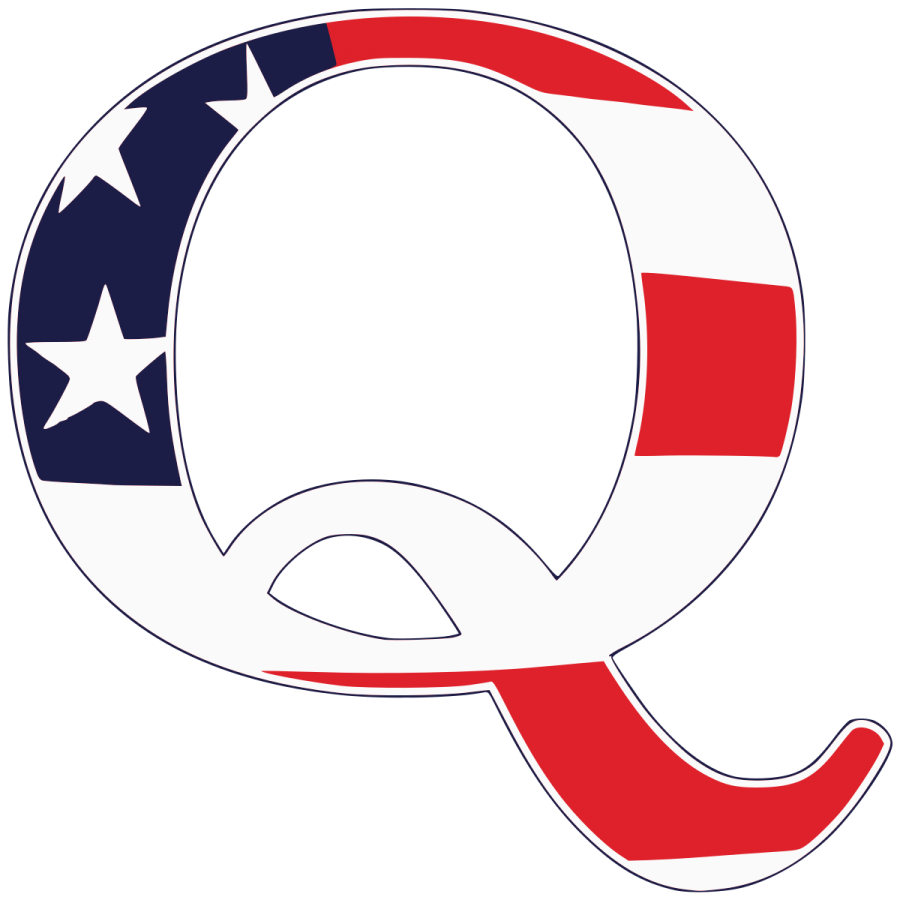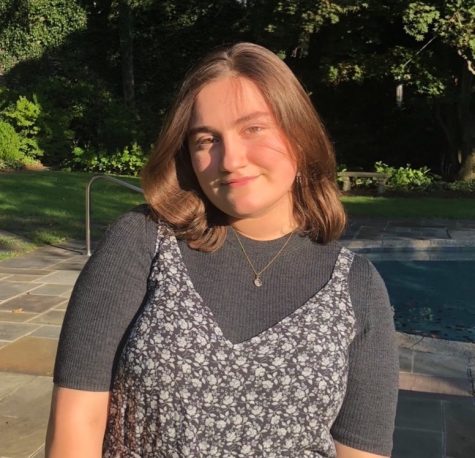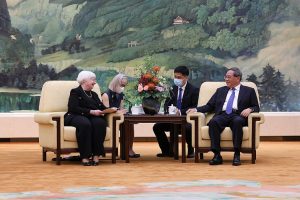QAnon: As American as Apple Pie
April 13, 2021
In recent months, we have seen conspiracy theories—like the idea that President Joe Biden stole the election from Trump—increasingly accepted into the mainstream, as politicians, including former-President Donald Trump, encouraged them. Websites like QAnon, Facebook, and Parler have seemed to add fuel to the fire. But a closer look at the American tradition of conspiracy theories shows that we aren’t dealing with anything new, nor are conspiracy theories merely a fringe phenomenon.
The lead up to the Jan. 6 insurrection saw President Trump slowly bringing “fringe” supporters into the mainstream by interacting with followers linked to theories like Pizzagate. January 6 saw hundreds of Trump’s most zealous supporters attempting to take the capital. Some members of the “#Storm” as they self-identify on QAnon, were seen sporting “Q” merchandise at the riot. The conspiracy theory goes far beyond President Trump’s rally cry: “you don’t concede when there’s theft involved,” imagining that the election was stolen by deep-state child sex traffickers.
While Trump’s populist rhetoric and false accusations of election fraud certainly emboldened “fringe” supporters, it would be inaccurate to suggest that this is the first time in American history that conspiracy theories have clawed their way in from the outskirts of society.
In “Enemies Within: The Conspiracy Culture of Modern America,” Professor Robert A. Goldberg of The University of Utah argues that conspiracy theories have captured the American consciousness across centuries for three key reasons.
First, because even as far back as the “City upon a Hill,” America has positioned itself as a nation on a “mission.” Our involvement in international conflicts like “World War I, World War II, Korea, Vietnam, the Gulf War” were in part driven by a mythologizing of American fortress, akin to conspiracy theories, which he describes as Americans “sending their children to fight against the evildoers and the godless.” This phenomenon was seen in the paranoia that led the United States to begin the war in Iraq in the aftermath of 9/11.
Second, Goldberg argues that America’s ethnic and cultural diversity can drive the fear of “the enemy within.” While America is often celebrated as a “melting pot,” ethnicity-based hate crimes show that many Americans fear those from different cultural backgrounds to their own. These sentiments were also seen in the unfounded fears that Japanese-Americans would turn on the United States during World War II, or the racist birther movement that claimed President Barack Obama wasn’t a U.S. citizen. And we saw the third play out on Jan. 6.
Third, he attributes the lack of faith in the government, or fear of the “deep state” and shadowy-forces, to America’s growing executive branch. The constant battle for state’s rights imagines Washington officials as all-powerful but disconnected from local communities. This is reflected in the massive wealth gap between elected officials and their constituents – the average elected representative is nine-times wealthier than the average voter. These fears led to the violence on Jan. 6.
Further, much of Trump’s 2016 presidential campaign was run on populist platforms that sowed distrust between Americans and the government. The idea that experienced politicians represented “the swamp” in need of draining to stamp out corruption plays into conspiracy theories that distrust the government. He continued to sow distrust with “fake news” accusations against the media. According to the General Social Survey, in 1973, 13% of Democrats and 16% of Republicans had “hardly any” trust in the press, and in 2018, those numbers increased to 28% for Democrats and 65% for Republicans.
The reality is that Trump didn’t do this alone. Conspiracy theories are a part of American culture. Millions of American believe that the moon landing was faked, for example.
Vanderbilt Professor Alexander Joskowicz, who has taught the class “Conspiracy Theories and Rumors,” said that social media has made it much easier for “fringe” ideas to take off and for believers to connect. “We are in a sphere where one thing is only one click away from the other,” he said.
Joskowicz added that in the 1980s and before, conspiracy theory ideas were spread using printed pamphlets, and as such, people were less easily swept up in them. “What you see now is people who are entering through an interest in UFOs and then they go all the way to QAnon,” he said. Joskowicz added that sites like QAnon, which did not exist when he began studying conspiracy theories over 10 years ago, have changed the game.
QAnon is especially powerful in that politicians like President Trump and others have helped it go more mainstream. In fact, Congresswoman Marjorie Taylor Greene (R-GA) referred to QAnon as “a once-in-a-lifetime opportunity to take this global cabal of Satan-worshiping pedophiles out,” and espoused the antisemetic conspiracy theory about weather-controlling “space lasers.” Of course, this isn’t the first time politicians have used conspiracy theories to gain power. Joskowicz cited McCarthyism as an example of government-sanctioned conspiracy theorizing.
While QAnon and many historical conspiracy theories are associated with right-wing ideas, it would be unfair to suggest that the left is guiltless. In fact, Joskowicz said that social media has bolstered the “crossover effect,” in which one single conspiracy theory appeals to diverse segments of society. This is currently playing out among COVID-deniers. While the anti-vax movement has historically been associated with “granola” liberals, it has recently attracted conservatives who believe the virus was a hoax designed to hurt Trump’s re-election chances, and that the vaccine has a mind-control element designed by Bill Gates.
Biden dismissed QAnon followers as in need of psychiatric help, and many Republican lawmakers have denounced QAnon as well. It seems that it’s up to both parties to spread accurate information and dispel misinformation. Additionally, as tech companies like Twitter are taking steps to label misinformation and disable QAnon-tied accounts, we may see a cultural shift. However, if spaces like QAnon and Parler continue to exist as echo chambers, it might not matter what Twitter and Facebook do.








